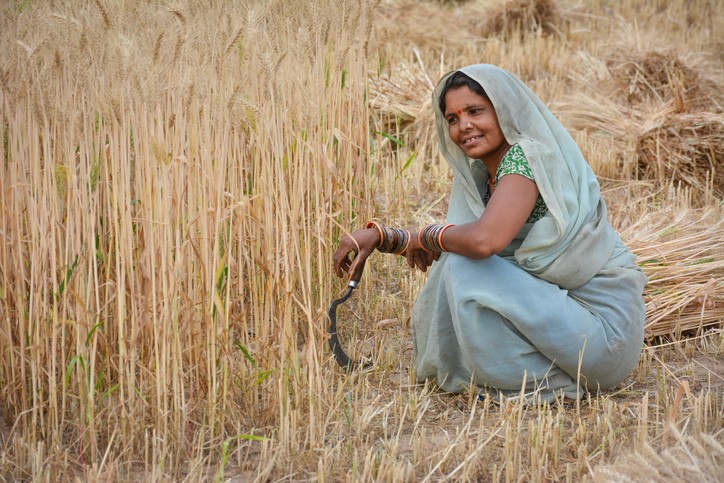What's the picture that comes to mind when you hear the word, 'farmer'? For nearly everyone, the mind's-eye tells them that a farmer is a man wielding a plough, or driving a tractor, or currently being roughed up and fined for protesting near a barricade. But where are the women in this frame?
Despite their significant contribution to agriculture in India, women are not given their due recognition as farmers. This is well known, and typically, any discussion on this topic tends to focus on the obvious fact - a very high proportion of those working in the agricultural sector as contributing family workers or wage labour are women. But there's more to it than that.
What is also ignored is an important and interesting shift in women's roles in agriculture. Women are increasingly participating in farms as managers and decision-makers on a range of decisions including input use, cropping decisions, sale of crops, etc. One of the principal reasons why women are pushed more and more into farm management is that men are migrating out of the villages, heading for cities and towns in search of a better life. As a result, in the villages, women must play a much wider set of roles.
In India, it is short-term migration, not permanent migration that is responsible for worker mobility. It is estimated that 10 million households in rural India have at least one or more short-term migrant staying away from home for more than 15 days but less than six months of the year. Men are considerably more likely to migrate than women.
What happens to women left behind in these rural households? Certainly, there will be some labour adjustment in the households left behind in the migrant's origin community. How this is managed will depend on household size and structure (joint or nuclear family), social norms, and expectations of men and women's respective responsibilities. These things vary a lot, and therefore the experiences of these families are also quite diverse.
My research based on National Sample Survey Organization data suggests that women from the 10 million rural households with a short-term migrant are more likely to be involved in decisions pertaining to operation of land than women from other families. Are our national agricultural policies geared to cater to these women farmers? Unfortunately, not.

Women are in the fields a lot, but largely absent in all post-harvest activity.
In India, our policy makers are still guided by the perception, 'think farmer, think male'. Often, women are not given due recognition as farmers or not recognized as owners of land, which hampers their ability to access productive inputs. Extension services typically engage with male farmers, while ignoring women, as it is assumed that women do not manage the farm. This has productivity implications for women-managed farms, which is not good news for a country like India where agricultural productivity on farms is already lower than the world average.
There could also be a downside to women taking on the responsibility of managing the farm. The increased workload on the family farm is probably not accompanied by a reduction in other duties for women. If so, it would reduce their leisure time, which would impact their sense of well-being.
Given the dearth of employment options in rural areas, short-term migration is only likely to increase in the future. Thus, the onus is on policy makers to create a favorable ecosystem for women engaged in farming by ensuring greater access to physical and financial resources.
 |
There are several steps that can be taken by the state to alleviate the problems faced by women farmers. For one, we need more and better information. Given our vast national data collection system, we should be able to identify active farm management by women and the circumstances under which these arise. What kinds of decisions do women make and if these are related to land management, agricultural decisions, including what to grow, sale of crops, control of income from such activities and so on.
It would also be important to collect data on the kinds of support services that women farmers access and the constraints faced by them. Available information on these aspects is not fully comprehensive and does not provide a national perspective. Good individual-level data that can be integrated with migration surveys or land and livelihood surveys will help in designing policies to help women.
An impediment to being recognized as farmers is that women do not own agricultural land, which is usually acquired by inheritance. Laws governing inheritance of agricultural land are complex, governed by personal laws and to complicate matters further, the jurisdiction of land governance is shared between the Centre and the states. In order to ensure gender equality with respect to inheriting agricultural land, there needs to be a review of all such land-related laws.
The Mahila Kisan Swashaktikaran Pariyojna (MKSP), a Central scheme launched in 2010, to train and enhance the productivity of women in agriculture is a great initiative. Rather than focus only on women, the scope of the scheme needs be enhanced to include all players in the ecosystem – mandi operators, village level revenue operators, local bureaucrats – all of whom are important stakeholders in the agricultural system. Unless the larger ecosystem is also sensitized towards the notion of women as farmers and their ability to own and cultivate land, the best of schemes and legislations will fall short of their intentions.























